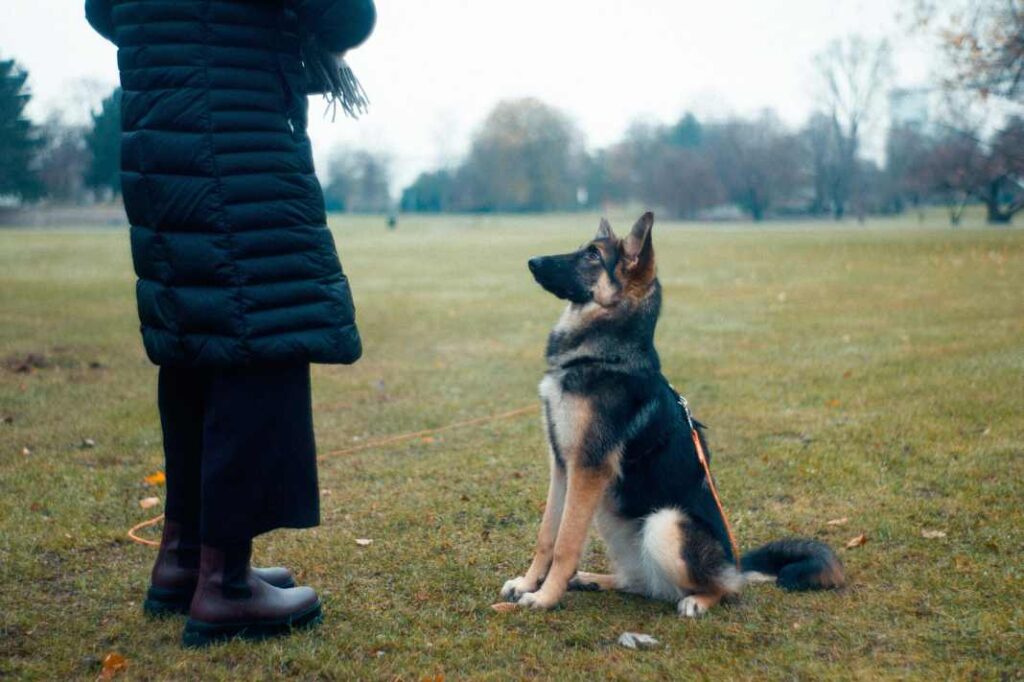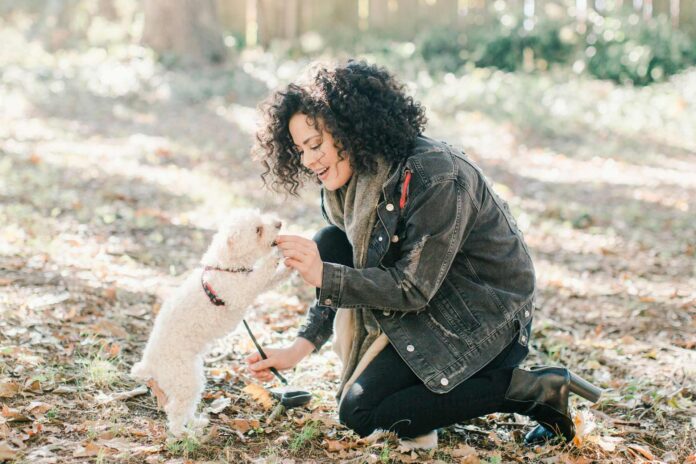Enhancing Dog Training with Positive Reinforcement Techniques: Learn how positive reinforcement training strengthens behavior, builds trusting relationships, and protects the behavioral health of pets, while also discovering advanced techniques and tools to make training more effective and enjoyable for both the dog and the owner.
Introduction to Positive Reinforcement Dog Training
Positive reinforcement training is a method that focuses on rewarding dogs for their correct actions, thus reinforcing the behaviors we want to see more frequently. This approach is grounded in the science of animal learning and has been proven remarkably effective in shaping both basic and complex behaviors in dogs.
By focusing on what dogs do right and rewarding them for it, trainers can encourage pets to repeat those actions through positive reinforcement training. Unlike traditional methods that may rely on punishment, positive reinforcement trainers use rewards to make training a more enjoyable and effective experience for both the dog and the trainer.
Rewards-based training encourages dogs to repeat good behavior, avoiding punishment.
The foundation of positive reinforcement training lies in operant conditioning, a learning process that involves modifying behavior through the use of rewards or punishments. In the context of positive reinforcement, the goal is to increase the likelihood of a behavior by presenting a reward immediately after the desired action occurs.
This method contrasts with negative punishment, which involves removing something pleasant to decrease an undesired behavior. By focusing on positive reinforcement and negative punishment, trainers can create a positive learning environment that strengthens the bond between dogs and their owners without causing fear or anxiety.

The Science Behind Positive Reinforcement
Operant conditioning plays a crucial role in positive reinforcement training. It helps dogs learn to associate their behavior with its consequences, shaping their future actions based on past experiences.
For example, if a dog sits on command and receives a treat, the dog begins to understand that sitting when asked results in a positive outcome. This type of learning is powerful because it makes dogs active participants in their training, encouraging them to try new things and enjoy the learning process.
Operant conditioning links dog behavior with outcomes, making training positive and effective.
However, the use of aversives in training, such as scolding or physical corrections, can lead to negative associations with the trainer and potentially damage the bond between dog and owner.
Positive reinforcement, on the other hand, teaches dogs to love training by associating it with pleasant experiences, thereby strengthening the relationship and trust between the dog and its owner.

Benefits of Positive Reinforcement Training
One of the most significant benefits of positive reinforcement training is its ability to strengthen behavior while building trusting relationships. By adding something positive, like treats or praise, trainers can reinforce desired behaviors without causing fear, anxiety, or stress in dogs.
This approach allows dogs to become active participants in the training process, fostering a sense of curiosity and eagerness to learn.
Positive reinforcement boosts behavior and trust, creating a positive, stress-free learning environment.
Additionally, positive reinforcement training protects the behavioral health of pets by creating a safe and supportive learning environment. It encourages dogs to experiment and learn from their successes, making training a positive and rewarding experience.
For instance, when a dog learns to associate sitting with receiving a treat, it not only learns the command but also develops a positive attitude towards training.
Implementing Reward-Based Training Methods
Effective use of rewards is crucial in positive reinforcement training. High-value treats, such as small pieces of cooked chicken or cheese, can be particularly effective in motivating dogs to display desired behaviors.
The key is to select rewards that the dog finds irresistible, making the training process more efficient and enjoyable. Tips for creating effective positive reinforcement techniques for quick dog training.
Use high-value treats and clicker training for efficient, enjoyable dog training experiences
Incorporating clicker training into positive reinforcement techniques is another powerful strategy. The clicker, a small handheld device that makes a distinct sound, helps mark the exact moment a desired behavior is performed.
This clear communication aids in the dog’s understanding and speeds up the learning process. Additionally, verbal praise and physical affection can serve as powerful reinforcements, further encouraging desired behaviors during training sessions.
The Role of Patience and Consistency
Consistency is crucial in reinforcing commands and ensuring dogs understand and respond to cues correctly. By using the same commands and rewards each time a desired behavior is performed, trainers help dogs make clear associations between actions and outcomes.
For example, consistently rewarding a dog immediately after it sits on command reinforces the behavior and helps the dog learn more quickly.
Consistency and patience in training reinforce desired behaviors, ensuring clear action-outcome associations.
Patience is equally important in positive reinforcement training. Learning new behaviors can take time, and it’s essential for trainers to remain patient and persistent.
Celebrating small successes and gradually increasing the complexity of commands can help maintain a positive training environment and encourage continuous improvement.
Differentiating Positive Reinforcement from Punishment
Positive reinforcement and punishment in dog training represent two fundamentally different approaches. Positive reinforcement focuses on adding something pleasant to strengthen a behavior, such as giving a treat or praise when a dog sits on command.
In contrast, punishment involves adding something unpleasant or removing something pleasant to decrease an undesired behavior.
Positive reinforcement rewards desired behavior; punishment adds/removes to decrease undesired actions, affecting dog well-being.
The key difference is that positive reinforcement methods aim to strengthen desired behaviors by making them rewarding for the dog. This approach promotes a positive learning environment and helps build a strong, trusting relationship between the dog and its owner.
On the other hand, punishment-based methods can lead to fear, anxiety, and even aggression in dogs, potentially harming their well-being and damaging the bond with their owners.
Advanced Techniques and Tools
To maximize the effectiveness of positive reinforcement training, trainers can employ various techniques and tools.
Tracking progress during training sessions allows for the monitoring of what works best and making necessary adjustments.
Minimizing distractions can help dogs focus better on learning and responding to commands.
Use tracking, minimize distractions, and employ markers like clickers for clearer, more effective positive reinforcement training.
Markers, such as clickers, play a significant role in positive reinforcement techniques by providing clear and immediate feedback to the dog.
This clarity helps the dog understand exactly which behavior earned the reward, facilitating faster and more effective learning.
The Online Dog Trainer: Your Step-by-Step Guide to Dog Training Success
When exploring the world of positive reinforcement techniques for our canine companions, it’s crucial to rely on trusted, expert advice that not only strengthens the bond between you and your furry friend but also promotes a harmonious living environment.
This is where The Online Dog Trainer, spearheaded by the renowned Doggy Dan, becomes an invaluable resource for dog owners everywhere.
Doggy Dan’s course stands out in the realm of dog training for its gentle, effective, and truly positive approach. Understanding that dogs are sensitive, intelligent creatures who respond best to love, patience, and positive reinforcements, Doggy Dan has crafted a comprehensive training program that caters to all dog breeds and ages.
From solving common behavioral issues like excessive barking and aggression to mastering basic commands and beyond, The Online Dog Trainer covers the gamut of dog training needs in an accessible, online format.
What sets Doggy Dan’s method apart is his emphasis on establishing a leadership role with your dog using love and respect rather than fear or intimidation. His techniques are rooted in the psychology of dogs, ensuring that the training not only works but sticks.
Discover Doggy Dan’s positive, effective dog training techniques for a happier pet relationship.
The course is structured to be easy-to-follow, offering step-by-step guides, videos, and direct support that make the journey of dog training as rewarding for the owner as it is for the dog.
Whether you’re a first-time dog owner or a seasoned pet parent looking to refine your dog’s training, The Online Dog Trainer provides all the tools, insights, and support you’ll need to achieve a balanced, joyful relationship with your dog.
By incorporating Doggy Dan’s positive reinforcement techniques into your training regime, you’ll be taking a significant step towards a happier, more understanding, and cooperative living situation with your four-legged family member.
Discover the transformative power of positive reinforcement with Doggy Dan’s The Online Dog Trainer course, and embark on a rewarding adventure that will bring out the best in both you and your dog.
Conclusion: Mastering Dog Training with Positive Reinforcement Techniques
Positive reinforcement techniques is a powerful and effective method for teaching dogs new behaviors and improving obedience.
By focusing on rewarding desired actions, trainers can create a positive and enjoyable training experience for both the dog and the owner.
Positive reinforcement creates a rewarding training experience
This approach not only leads to long-lasting behavioral changes but also fosters a strong and loving bond between pets and their owners.
By understanding and applying the principles of positive reinforcement, trainers can ensure a successful and rewarding training journey for all involved.
Related Articles:
Mastering Reward-Based Training: Optimizing Treats and Praise for Dog Training
Unlocking Humane Dog Training Success: Why Positive Reinforcement Outshines Punishment
Transform Your Dogs Behavior with The Online Dog Trainer: A Guide to Effective Training




